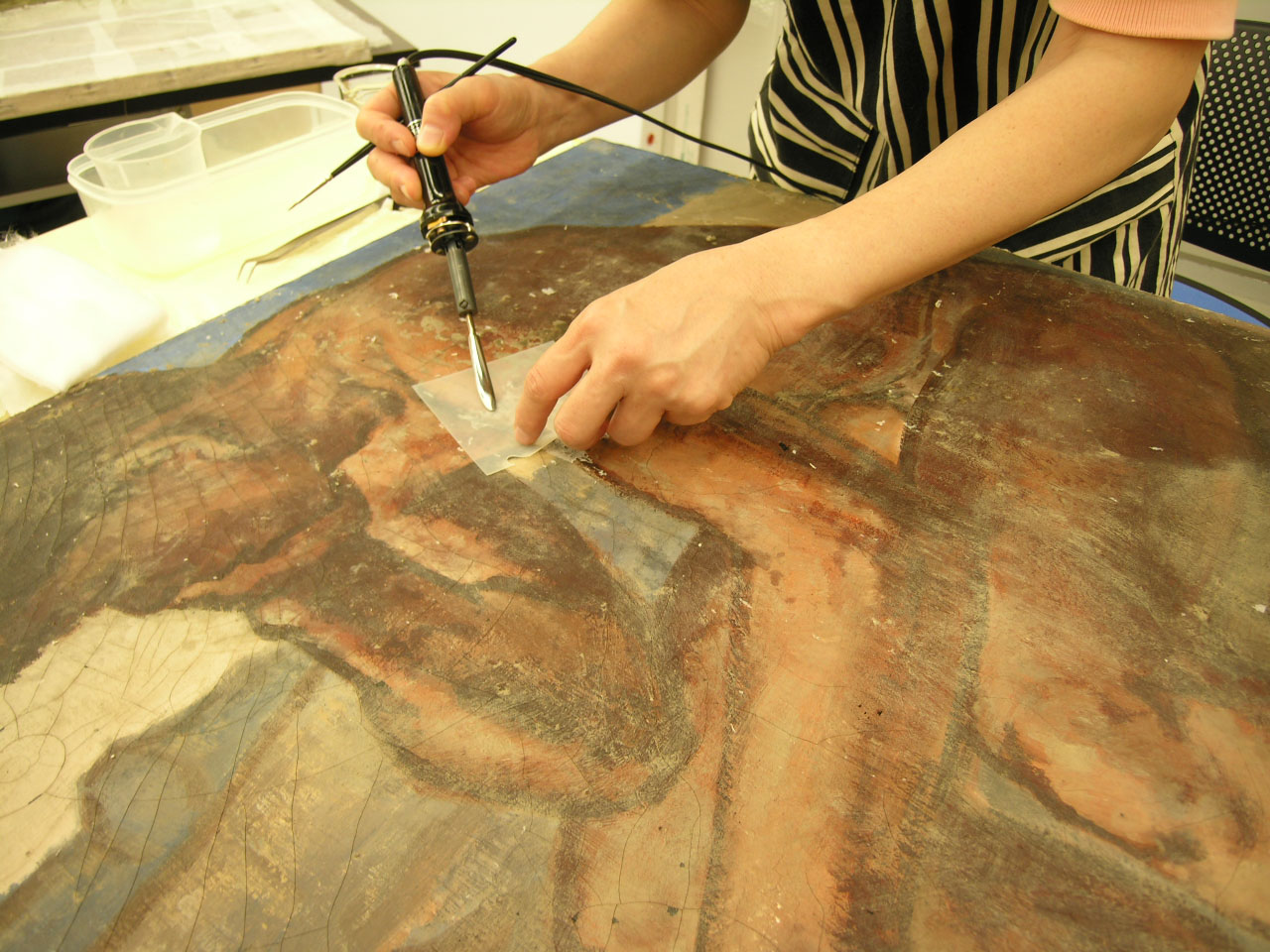A dozen paintings hang from the white walls of a gallery at the Museum of Modern Art in Hayama, Kanagawa Prefecture. Mostly prewar works by artists involved in the Proletarian movement, who focused on depictions of factory and farm laborers, the paintings are like many others on display at the museum — except that alongside each is a small photograph showing the same works cracked, scratched and, in many cases, caked in dirt and paper pulp.
It turns out this isn't just any exhibition, but a happy report to the people of Japan that this series of oils, once the pride of Ishinomaki Cultural Center in Miyagi Prefecture — an institution that was almost completely destroyed by the Great East Japan Earthquake and tsunami of March 11, 2011 — have been restored to very nearly their original condition.
In the weeks after that disaster, the national government's Agency for Cultural Affairs set up a "cultural properties rescue committee," comprising the nation's major arts bodies, to coordinate the work of salvaging damaged artifacts. One of those bodies was the Japanese Council of Art Museums — and one of its members is the Museum of Modern Art in Hayama.
















With your current subscription plan you can comment on stories. However, before writing your first comment, please create a display name in the Profile section of your subscriber account page.